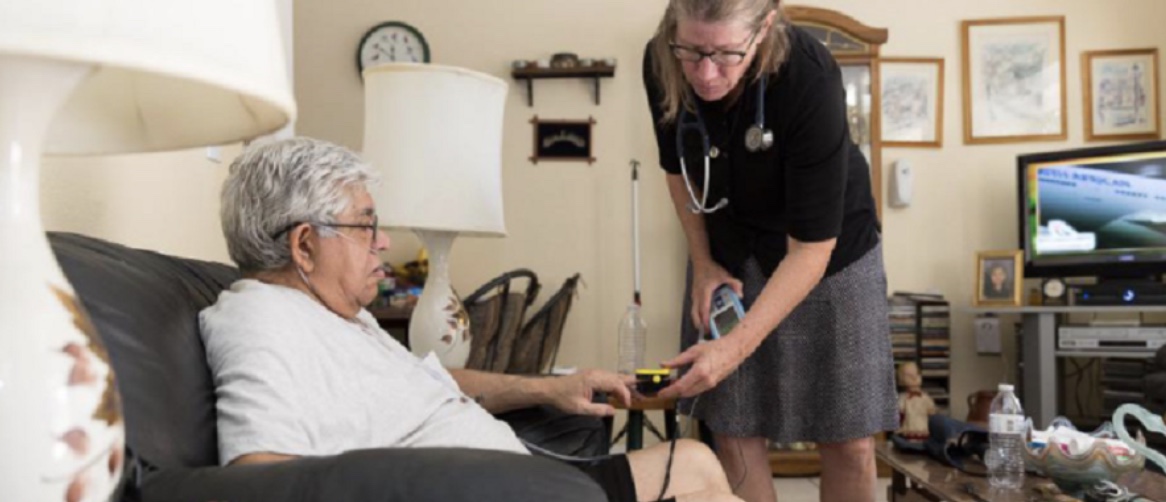As the pressure of the pandemic is easing the pressure on hospital staffed bed occupancy rate per 1000 patients has improved slightly. However, the shortage of skilled registered nurses, skilled physicians, and occupational fatigue-induced resignation of healthcare workers is a gnawing pain that cannot be ignored.
If all the healthcare stakeholders like hospitals, care workers, governments, insurance companies, and patients are looking to reduce healthcare costs, then proactive well researched measures must be taken to improve patient outcomes at an affordable cost. One such step that is gaining importance in the enablers circle because of the clear benefits is a hospital at home programs (HAH)
Hospital at-home programs deliver acute care within the perimeters of a patient’s home after initial assessment. Often there is a dedicated emergency team to respond to situations where a patient is stable yet needs hospital care. Such patients are fit to be cared for in their homes. If a patient does not live in a house that conforms with receiving acute care at home, then they may need to be hospitalized.
Background of the hospital-at-home programs
The clinical setting for patients is not an alien concept albeit it took some time to be introduced into the modern healthcare system in the United States. From time immemorial, royal and noble people have been attended by doctors or nurses at home. Palliative nurses have rendered hospice services to aging seniors to improve the quality of their life.
However, it was in 1995 that the first official hospital at-home program was conceived by the John Hopkins School of Medicine. Currently, they have tied up with multiple hospitals, clinics, hospices, and home health agencies to deliver their program.
Why is HAH not yet popular in the US like other countries?
Hospital at-home programs are popular in countries where there is a single-payer health system like Great Britain, Canada, and other countries where payment policies encourage acute care at home settings. In countries like Australia, many acute episodes resulting from conditions such as cellulitis and deep vein thrombosis have been treated at home for nearly 60% of the cases.
There is enough evidence to prove that HAH can be monitored in current times more efficiently through telehealth and RPMs, and is safe, less expensive, and more effective than an actual hospital, their rollout and use in the US are limited.
With multiple players in the payment and claims processing system of the US healthcare system, the ambivalent approach and rejection of the HAH concept can be attributed to reimbursement difficulties for home care.
Process in HAH
- Identify patients
Hospitals are not suitable for every patient and likewise, HAH may not be advisable for all patients. The onus of identifying a patient who needs acute care is stable enough and lives at a place that can support acute care is determined by a physician of the emergency department or community health center.
- Identify the ailment
All medical conditions cannot be treated at home even through dedicated acute care teams who are just as qualified and skilled as any other care provider in a hospital. Few conditions that lead to acute episodes like congestive heart disease, chronic obstructive pulmonary diseases, medium fractures, and cellulitis are examples of ailments that can be treated at home through dedicated clinician visits.
- Determine the suitability of home environments
The patient should live in a well-lit place that has air conditioning, running water, and easy access to bathrooms. The surrounding neighborhood should be free from noise that will hinder sleeping properly.
- Discuss with patients
Any treatment plan and its execution methods should be discussed with the patients to avoid gaps in communication and perception. Once a patient walks in with ailments that need immediate hospital admission but they are stable enough to receive care at home, they need to be identified by the aid staff. Hospital at-home programs can be a new concept for many and patients may be unaware of the merits till discussed with them.
- Provide care
Once identified, a dedicated team will be following up on the health care delivery at home for patients. Through telehealth, RPMs, and personal visits the program is executed to deliver patient care.
Conclusion:
Hospital at-home programs have proven to be cost-effective measures with a high turnaround rate of recovery and response to treatment plans.






